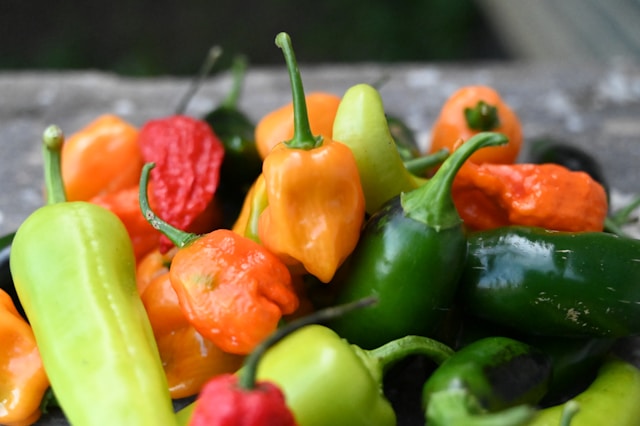Physical Address
304 North Cardinal St.
Dorchester Center, MA 02124
Physical Address
304 North Cardinal St.
Dorchester Center, MA 02124

If you’re thinking about growing jalapeños, you’re in for a treat! These vibrant and spicy peppers are not only easy to grow but also incredibly versatile in the kitchen. However, before you dive in, there are a few essential things you must read before you plant jalapeños. From choosing the right seeds to ensuring a bountiful harvest, this guide will walk you through every step of the process.
Jalapeño peppers are among the most popular chili peppers worldwide. Originally from Mexico, these peppers have gained immense popularity due to their perfect balance of heat and flavor. They add just the right amount of spice to dishes without being overwhelmingly hot, making them a favorite in salsas, pickles, toppings, and even grilled dishes.
The good news? Jalapeño peppers are easy to grow, even for beginners. Whether you have a garden or just a few pots on your balcony, these peppers thrive with minimal effort.
Before you plant, the first step is choosing high-quality seeds. Here’s how to ensure you get the best ones:
Buy from a reputable source: Purchase seeds from a trusted gardening store or a certified horticultural supplier to avoid mixed or low-quality seeds.
Check seed viability: If using seeds from store-bought jalapeños, ensure they are fully mature and dried before planting.
Opt for organic or non-GMO varieties: These tend to have higher germination rates and better disease resistance.
Jalapeño seeds need warmth to germinate effectively. Here’s what you should do:

Start seeds indoors: If you live in a colder region, begin sowing seeds indoors about 8-10 weeks before the last frost.
Maintain proper temperature: Keep the soil temperature around 65-80°F (18-27°C) for optimal germination.
Use quality potting soil: A light, well-draining soil mix works best.
Water carefully: Keep the soil moist but avoid overwatering, which can cause seed rot.
Once your seedlings have grown a few inches tall and have at least two sets of true leaves, it’s time to transplant them.
Choose a sunny location: Jalapeños need at least 6-8 hours of direct sunlight daily.
Prepare the soil: Ensure the soil is well-draining, slightly acidic (pH 6.0-6.8), and enriched with organic matter.
Space properly: Plant seedlings 12-18 inches apart to allow good air circulation.
Harden off seedlings: Gradually expose them to outdoor conditions for a few days before transplanting to reduce shock.
Proper care will ensure a healthy and productive jalapeño plant. Keep these tips in mind:
Watering: Water consistently but avoid waterlogging. Aim for 1-2 inches of water per week.
Fertilization: Use a balanced fertilizer with higher potassium content to encourage fruiting.
Mulching: Add mulch around the base to retain moisture and control weeds.
Pruning: Remove any yellowing leaves and weak stems to boost growth.

Jalapeños can be prone to pests and diseases, so prevention is key.
Common pests: Watch out for aphids, spider mites, and pepper weevils. Use organic insecticides or neem oil as needed.
Disease prevention: Avoid overwatering to prevent fungal infections like root rot and leaf spot.
Companion planting: Grow basil, marigolds, or onions nearby to deter pests naturally.
Jalapeños are ready to harvest when they reach about 3-4 inches in length and have a firm texture.
Harvest at the right time: If you want a milder taste, pick them early while they are green. For a spicier kick, let them turn red before harvesting.
Use proper tools: Cut peppers off with scissors or a sharp knife instead of pulling to avoid damaging the plant.
Store fresh jalapeños in the refrigerator in a loosely sealed plastic bag for up to two weeks.
For longer storage, freeze whole jalapeños or slice and dry them for future use.
Growing jalapeños is an enjoyable and rewarding experience, whether you’re a seasoned gardener or just starting out. By following these essential steps, you’ll set yourself up for success and enjoy a continuous supply of these flavorful peppers.
So, if you’re ready to spice up your garden and your meals, make sure to read before you plant jalapeños and follow these expert tips for a thriving pepper harvest!
Happy gardening!